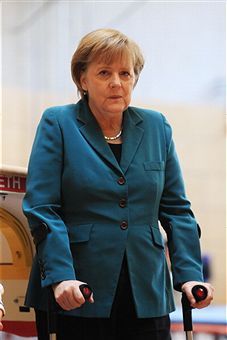 France and Germany’s better than expected growth numbers are making news today.
But the divergence within the Eurozone — Estonia grew at 2.1 percent in the first quarter, Portugal shrank by 0.7 per cent —
highlights one of the single currency’s biggest problems: how can one interest rate fit all?
France and Germany’s better than expected growth numbers are making news today.
But the divergence within the Eurozone — Estonia grew at 2.1 percent in the first quarter, Portugal shrank by 0.7 per cent —
highlights one of the single currency’s biggest problems: how can one interest rate fit all?
Economists expect Germany, whose GDP is now larger than before the financial crisis, to continue to outperform the rest of the Eurozone. Given that Germany and France together make up half of the Eurozone economy, interest rates will have to be set with this in mind. But, on the other hand, the Iberian countries and Greece are struggling with austerity and need a continued monetary stimulus.
London is expecting that another set of bailouts for distressed Eurozone members will be agreed early next week. But to some extent, these bailouts are only treating the symptoms not the disease itself.







Comments